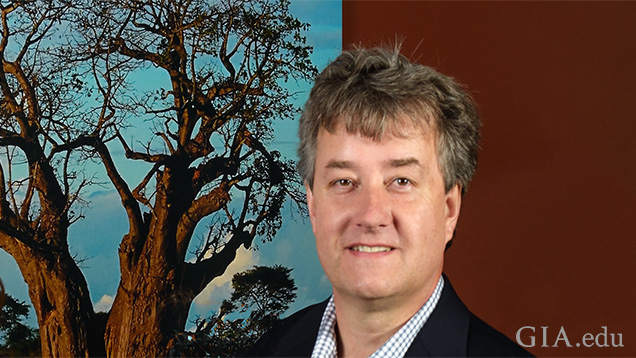Challenges and Opportunities

In June, GIA held a reception at our Carlsbad headquarters to celebrate this anniversary and to honor the artistry of Harold and Erica Van Pelt. The reception marked the opening of a museum exhibition of their G&G cover shots, displayed alongside many of the fabulous pieces they photographed. The Van Pelts’ beautiful images graced the covers of our journal for nearly 30 years, and really symbolized the stature and quality of G&G.
Along with GIA president Susan Jacques, editor-in-chief emeritus Alice Keller, and frequent contributor John King, I was privileged to offer a few words to our guests. While the others spoke to G&G’s context, its place at the heart of GIA’s mission, and the contributions that enriched the journal over the years, my topic was the future. Although there are undoubtedly challenges in living up to G&G’s 80-year legacy, there are corresponding opportunities to take our journal to a much wider audience. While technology and social media provide much of this new potential, it’s also abundantly clear how well people respond to the printed journal, and how important face-to-face contact is for transforming ideas into reality. As we plan for the future, our strategy needs to incorporate both elements.
Our lead article in the summer issue, by GIA’s Robert Weldon and Russell Shor, examines the progress Botswana has made toward becoming a major diamond processing and jewelry manufacturing center. The country has a history—primarily through the rich diamond mines in its territories—of harnessing natural resources for the benefit of its people. The authors examine the current status of Botswana’s cutting industry and its prospects for the future. The article draws from Weldon’s 2013 visit to Botswana with GIA videographer Kevin Schumacher, whose extensive videos illuminate many of the locations and people described in the paper.
In the minds of many practicing gemologists, three-phase inclusions in emerald are inextricably linked to Colombian origin. Yet emeralds from Afghan, Chinese, and Zambian deposits can display strikingly similar multiphase inclusions. Sudarat Saeseaw, Supharart Sangsawong, and Vincent Pardieu, all from GIA’s Bangkok laboratory, present detailed photomicrographs of samples from these localities and combine this study with spectroscopy and trace-element analysis. The authors demonstrate that the combination of these techniques has significant potential for the geographic origin determination of emerald.
We also offer a fascinating paper examining the blue color phenomena seen in some Dominican and Indonesian amber. Yan Liu of Liu Research Laboratories and coauthors Guanghai Shi and Shen Wang provide the gemological basis for the surface-related blue fluorescence seen in such amber.
Our final feature article—also on amber—comes from Yamei Wang and Mingxing Yang, both of the China University of Geosciences in Wuhan, and Yiping Yang, a former postgraduate from the same institution. This paper documents their heat treatment experiments on a range of amber samples, which successfully reproduced some of the products found in today’s jewelry marketplace. Along with the methods and results of their experiments, the authors present criteria for identifying heated amber.
In addition to these feature articles, you’ll find a variety of updates in our regular Lab Notes and Gem News International sections.
One of our continuing priorities is to develop synergy with the GIA website. In this issue, we entreat you to visit—in case you missed them—our recent article posts and related videos. You’ll hear the voices of researchers, miners, and gem professionals, and see inside research institutions, mines, museums, and the diverse locations where gems are bought and sold.
We hope you enjoy the summer 2014 edition!



